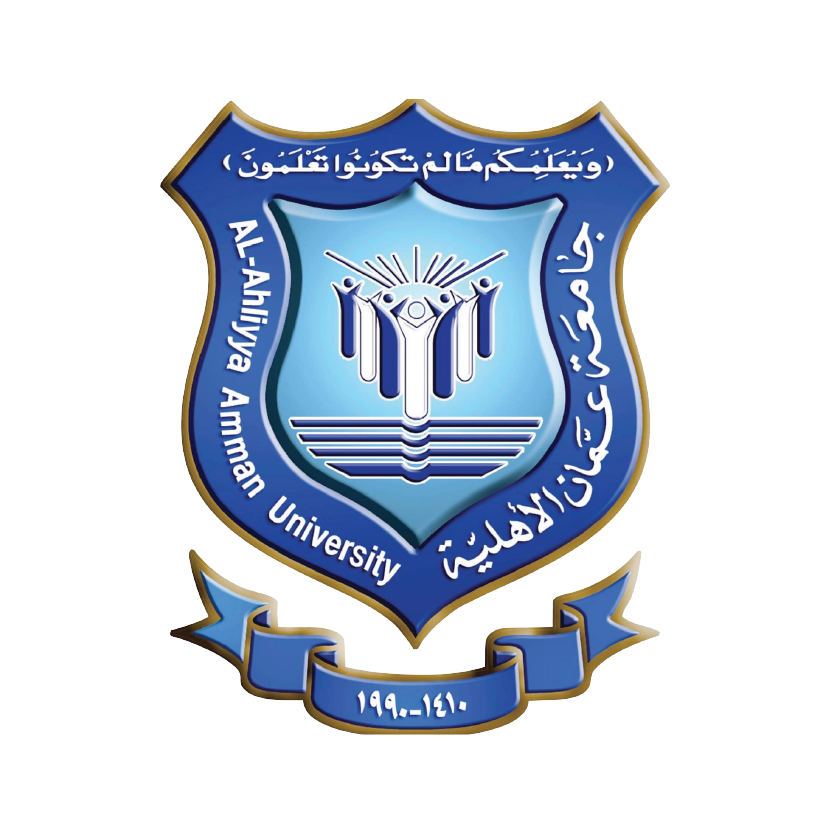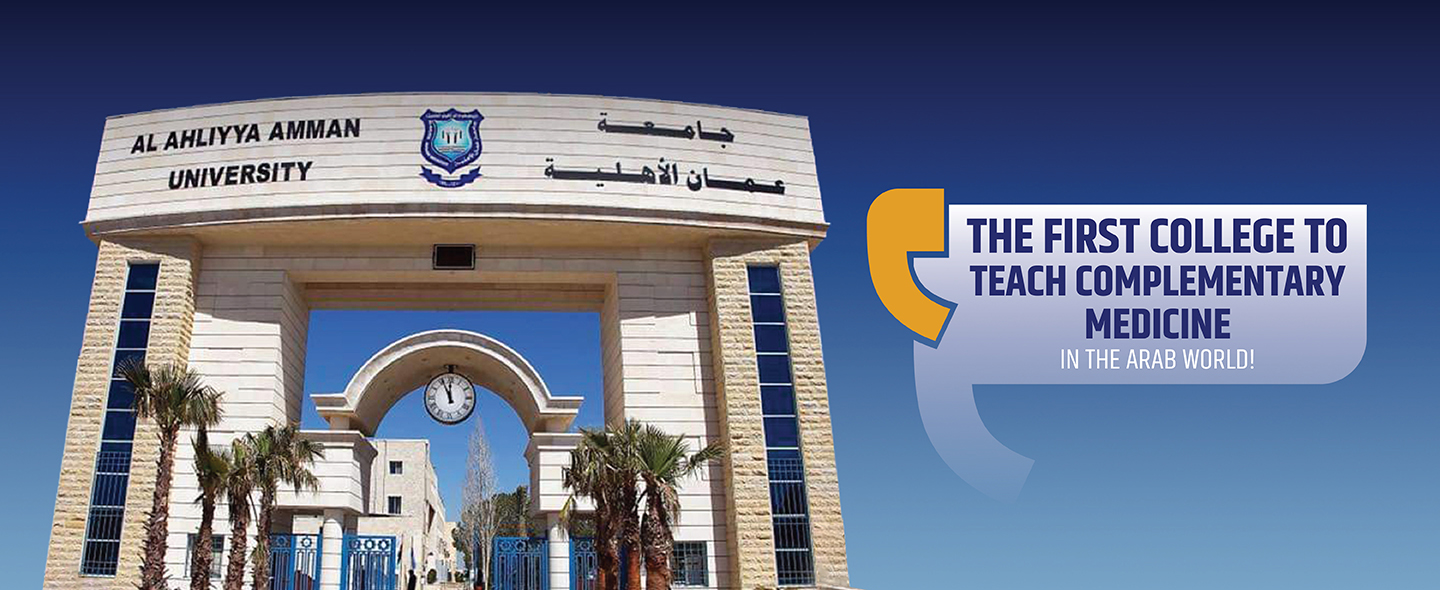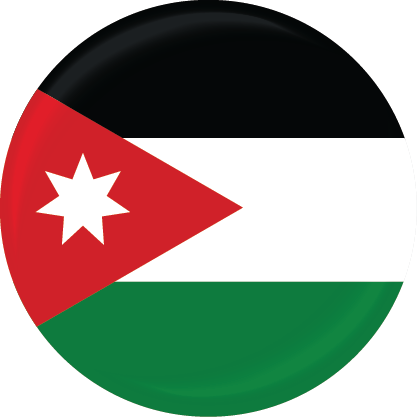Register Now! Please, fill in your personal details and we will contact you shortly
Osteopathy
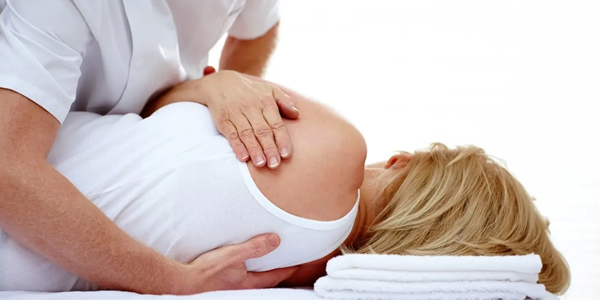
Audience
Program benefits
About the program
It’s a treatment system which deals with the structure of the body, bones, joints, ligaments, tendons, muscles and all the connecting tissues, their relationship with each other, and the effects of their health status on the various body systems. Osteopathic medicine focuses on teaching a person how to avoid disease by following a healthy lifestyle. People always turn to an osteopathic specialist to treat back and neck pain, joint pain or injuries, and this treatment is also used as a cure for many internal diseases. It is also used as an integral part of sports medicine for athletes' injuries.
It is a medicine specified in the philosophy of the person in which doctors or practitioners embrace a method by which they treat a person entirely and not only in relation to his complaints. Attention is given to helping the body to heal itself, as they view the human body as one unit or one organ, and there is a focus on the body’s mechanics and the relationships of the intervening organs and the body systems as well.
However, there is a special focus on the skeleton of the body, where doctors use manual therapy with or instead of the traditional treatment of drugs and surgery in order for the person to enjoy his health. After serving on the front lines of the fighting in the American Civil War as a surgeon, and after losing his three children to vertebral meningitis, Andrew Taylor Still became unconvinced and pessimistic about the current medicine.
This was in the middle of the last century when the available treatment was useless in most cases. So Still wanted to find a treatment method which is more sympathetic to the patient and more beneficial. After experiments, he made sure that manual methods alone were remarkably more effective than other methods in the cases they dealt with most. In 1874 he began to use manual methods of treatment, which he called osteopathy, with surgery also in a very large clinic, and he became known for the successes he achieved.
Eighteen years later, after proving that these methods were more effective than the methods available at the time, he established the first school to teach it, which he called the Osteopathy School of Medicine in Kirksville, Missouri State. Treatment and hand scrubs are not new as an idea, and folk medicine all over the world contains forms of this treatment, but it has remained for treating back problems, not for various conditions, as Andrew Still put it. Andrew Still believed in the body’s own potential for healing, and the necessity that the sources of blood and nerves for all body tissues be unimpeded for these tissues to function properly.
If a structural problem, such as a muscle strain, curvature of the spine, etc., interferes negatively with the blood flow and nerve, then the body's ability to heal and disease may be negatively affected. So, he established a method for treating or scrubbing by hand to return any structural deviations to normal. Still was the first to provide a reasonably plausible explanation for the importance of the spine for maintaining health as it surrounds the spinal cord. It is possible to consider the spinal cord as an accessory to the brain that controls all activities of the body, not only the muscles, but also important vital organs such as the kidneys, heart, liver and lungs, as well as blood vessels and glands. Any interference with the nerves passing to and from the brain through the spinal cord is bound to affect the normal functioning of the tissues that pass through them or to them.
He emphasized three basic principles of healing, which are: 1. The healthy, natural body includes within it the ability to defend and repair injuries in cases of infection and the effects of toxicity and accidents. 2. The body is one unit, and when there is an abnormal structural or functional situation, it negatively affects the other parts. 3. The body can defend or fit in the best possible way if its structure is in its maximum dynamic and flexible position. As a result of the idea that the body contains its own defenses, the disease occurs when these defenses weaken, and that this weakness has occurred because the body has become mechanically incorrect.
Dr. Still looked at his patients in the same way, leaving the usual method of treating symptoms without looking for the causes. And it was after asking the patient about everything related to him that the doctor considered the alternative related to his disease condition as we have seen in the previous chapters, he used to examine the connective tissues with his fingers, and he used to manually examine the internal organs such as the liver and stomach. This is what Still was studying in that the structure and function (of the organs) are inextricably linked,
and this is what he said: The skeletal system is made up of bones, ligaments, muscles and the peritoneum (which is the layer that is located directly under the skin and which consists of bundles of flexible fibrous tissue that envelop Muscles, nerves, and different organs) form one structure which when exposed (from its normal position) can cause changes in the functions of other parts of the body. Contrary to the generally accepted ideas today, Dr. Still attaches great importance to the diagnosis and treatment of the peritoneum as well as the spine. This was his advice: The peritoneum is the place where you search for the causes of disease, and it is the place where treatment for all diseases begins. The musculoskeletal system is made up of bones, ligaments, muscles, and the peritoneum (which is the layer that is located directly under the skin and which consists of bundles of flexible fibrous tissues that envelop the muscles, nerves and various organs) that form a single structure which when exposed (from its normal position) can make changes In functions of other parts of the body. Contrary to the generally accepted ideas today,
The Al-Ahliyya Amman University - Training and Consulting Department curriculum is designed to be highly integrated to provide both a rigorous foundation in the fundamental principles of the biomedical sciences and a robust emphasis on the clinical sciences. foundational concepts in anatomy, biochemistry, genetics, cell biology, microbiology, immunology, physiology, pharmacology, and pathology, osteopathic principles and practice, communication skills, osteopathic terminology, osteopathic physical examination, clinical scenarios and development of clinical skills, the history, principles and practice of osteopathic medicine, physical and differential diagnosis, medical ethics, interprofessional education, professionalism, research, and the legal aspects of medicine, an education in the general areas of family medicine, surgery, surgical subspecialties, pediatrics, women’s health, behavioral health, internal medicine, internal medicine subspecialties, and emergency medicine, Osteopathic Principles and the Iliosacral Joint, The Pelvic Organs, The Lumbar Spine, Cranial Osteopathy, Applied Neurology, The Hip and the Knee, The Ankle and the Foot, Safety, The Sacroiliac Joint, The Kidneys and the Adrenal Glands, The Liver and the Gall Bladder, The Thoracic Spine and the Ribs, Integration, The Intestines, The Stomach, The Pancreas and the Spleen, The Cervical Spine, The Heart, the Lungs and the Thyroid, The Upper Extremity, The Fascia, Integration and Practical Exam, The Foot and Chains in the Lower Extremity, The Elbow, the Wrist and the Hand + Practical Exam, The Shoulder, The Diaphragm, Neurology II & Exclusion diagnosis, Introduction Visceral Osteopathy, The Liver and the Gallbladder, The Esophagus, The Surrenal Glands. Clinical Work + Practical exam Visc, Integration in the Osteopathic Practice.
Osteopathic medicine focuses on teaching a person how to avoid disease through healthy behavior and lifestyle. This medicine is also used for many other conditions such as arthritis, allergies, chest crisis, Dizziness, menstrual pain, migraine, sciatica, sinusitis and problems related to the jaw joints. Osteopathic medicine also helps relieve symptoms of discomfort, as in the case of back pain in pregnancy and digestive problems. Osteopathic medicine relates to the elderly as it reduces the effects of aging factors related to the spine and joints. It is also used as a supplement to sports medicine for athletes' injuries. This treatment is also used to facilitate the movement of body fluids, restore normal tissue functions, and relieve a person from joint pain and any associated dysfunction. These procedures have different forms depending on the needs of the patient, and the most famous of them are methods related to joint movement: It is a method related to moving the joints within their range in order to restore their normal functions. And the method of counter-stress: In this method, a position of the body that relieves pain for the patient is discovered. This method includes a mixture of movements that the patient reaches with the specialist and repeatedly practices between pushing, pressure, relaxation, and generally changing positions to stimulate the point that achieves comfort for the patient.
A comprehensive course of study that gives graduates the ability to treat a wide range of problems and illnesses. The most comprehensive program in the field of Osteopathy.
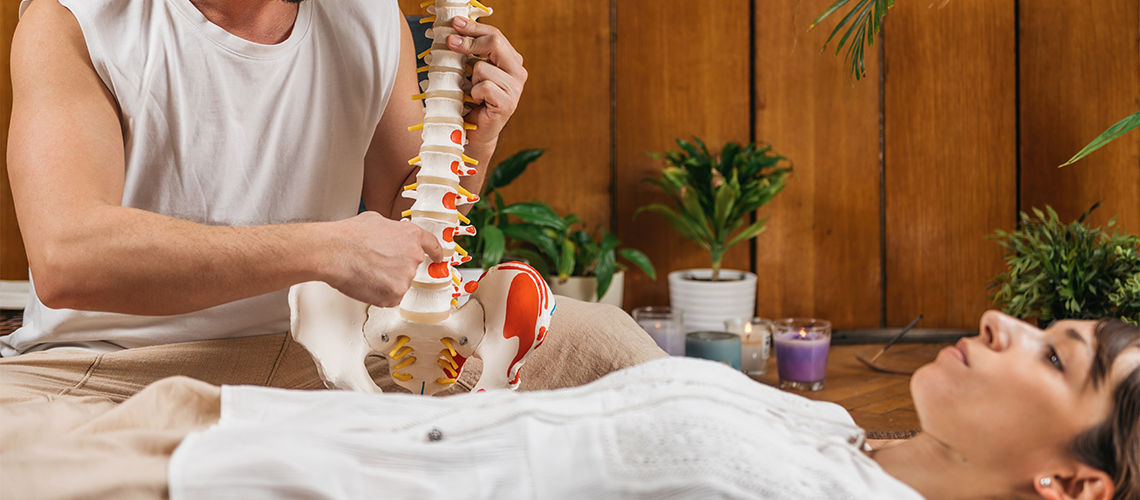
Work fields
Medical centers, private clinics, rehabilitation centers, physiotherapy clinics, osteopathy clinics, elderly homes, and others.
 Certificates
Certificates
Diploma certificate from Al-Ahliyya Amman University - Training and Consulting Department, the International College of Integrated Medicine (CIM) and the Complementary Medical Association CMA located in London, UK.
Register & Pay
Dean

Dr. med. Ldo. med. Álvaro Rubio
Citizenship:
Spaniard and German
FIELD OF ACTIVITY
Adult Cardiac Surgery - Cardiac Surgery Consultant
Vascular Surgery - Vascular Surgery Consultant
Pediatric Cardiac Surgery
Intensive Care Medicine
QUALIFICATION
Universitas Extrematurensis, Spain
Justus Liebig University, Germany
Cardiac Surgery Consultant - Bavarian State Chamber of Physicians, Munich/Germany
Vascular Surgery Consultant - Baden-Württemberg State Chamber of Physicians, Freiburg/Germany
Intensive Care Medicine Consultant - Baden-Württemberg State Chamber of Physicians, Freiburg/Germany
ADDITIONAL QUALIFICATION
Specialist in Radiation Protection
Certificate Clinical Homeopathy
MEMBERSHIP - SCIENTIFIC AND PROFESSIONAL SOCIETIES
CSN - Cardiothoracic Surgery Network
BDC - German Professional Association of Surgeons
DGTHG - German Society for Thoracic, Cardiac and Vascular Surgery
Association of Cardiac Surgeons
European Society of Cardiology
INVESTIGATION AWARD
The Pierre Grondin Award 2007
CMA President

Jayney Goddard, MSc, FCMA, FBSLM, Lic.LCCH, Dip.ACH, FRSPH
President - The Complementary Medical Association, London, UK
Jayney Goddard is President of The Complementary Medical Association (The CMA) which is the world's largest professional membership body for complementary medicine (CM), and she is widely regarded as one of the leading experts on complementary medicine and natural healthcare. Jayney has a vast depth of knowledge across the entire field of complementary medicine and can always be relied upon to provide substantiated research data during any interview, lecture or written work.
Jayney is a Fellow of the Royal Society of Medicine and a Fellow of the Royal Society for Public Health. She has a Master of Science post-graduate degree from the University of Central Lancashire and began her doctorate in January.
She was recently awarded the Complementary and Natural Healthcare Expo Award for Outstanding Contribution to Complementary Medicine - which was judged by a panel of respected complementary medical professionals and a group of high-profile captains of industry coming from backgrounds as diverse as banking, insurance and entertainment.
She has a busy practice (UK, USA and Skype) where she works uses a range of complementary medical approaches with her patients, including homeopathy, psychotherapy, nutrition, herbal medicine, Mind/Body medicine and hypno-analysis. Jayney's special clinical interests include auto-immune disease and natural anti-ageing/rejuvenation strategies.
Jayney is editor of "With Our Complements", the Journal of The Complementary Medical Association and she is a high-profile contributor to print and broadcast media.
Jayney is the complementary medical expert for various newspapers and magazines and is a regular guest on television and radio when expert opinion is required on any aspect of complementary medicine and natural health care. Adept at phone-in “open clinic” type broadcasts, Jayney is always a popular guest. She was the Discovery Channel's complementary medicine expert and provided all complementary medical content for the Granada/Boots PLC joint venture "The Wellbeing Channel". A prolific writer, her most recently published books include the international number one bestseller "Rewind Your Body Clock - The Complete Natural Guide to a Happier, Healthier, Younger You (Watkind UK / Penguin USA and Rest of world / Audiobook by WF Howes, narrated by Jayney Goddard).
Jayney has also authored two books on pandemic 'flu: the critically acclaimed "The Survivor's Guide to Swine Flu: The Complementary Medical Approach", "The Survivor's Guide to Bird Flu: The Complementary Medical Approach" and also "Complementary and Alternative Medicine: The Scientific Verdict on What Really Works", edited by Jayney and published by Collins. Jayney also edits The CMA's highly informative weekly e-Newsletter. Jayney writes the monthly Natural Anti-ageing column for Natural Health magazine and is credited by them as "The UK's leading natural anti-ageing guru".
Jayney testified for the USA's "White House Commission on Alternative and Complementary Medicine" in order to help the USA rationalize complementary and alternative medicine and all her recommendations were accepted unanimously. In the UK, Jayney is The CMA representative for the Parliamentary Group for Complementary and Integrated Medicine and she is active globally, assisting governments worldwide to rationalise their approach to ethical, responsible complementary medicine.
Jayney lectures at various medical colleges and to faculty and students at Cambridge University in the UK and the University of Miami School of Medicine in the USA. Jayney has taught, as Visiting Professor, on the Masters course at The Graduate Institute in Connecticut, USA, where faculty colleagues include Dr Bernie Siegel, Professor Rupert Sheldrake and Dr Steve Horowitz.
Jayney's Personal Mission
To raise the profile of Complementary Medicine and Integrative Healthcare so that the public and the conventional medical profession accept that these approaches are a viable health option when delivered by properly trained, professional practitioners and integrative medical doctors.
To create an environment where practitioners of excellence are regarded as professionals - true experts in their field - and are accorded the respect that they so rightly deserve.
To ensure that all those who wish to join the profession can gain access to bona fide CM (complementary medicine) colleges which offer truly excellent training.
To ensure that the public understands what constitutes outstanding complementary medical health care and has ready access to practitioners of excellence.
Memberships:
Fellow; Royal Society of Medicine,
Fellow; Royal Society for Public Health,
Founder and Co-Chair; British Society of Lifestyle Medicine
Advisory Board Member; Health Food Manufacturers Association,
Advisory Board Member; "camexpo",
Advisory Board Member and Founding Contributor; Integrative Healthcare Symposium,
Equity
Accreditation

The college of Integrative Medicine in Al-Ahliyya Amman University - Training and Consulting Department is the first college to teach natural medicine study programs in the Arab world, and is recognized by the Jordanian higher education Council, for it's excellence in Academic studies and research. It's the only college that grants diploma certificates accredited by the Jordanian higher education council.
Students reviews
About The College
The college of Integrative Medicine in Al-Ahliyya Amman University - Training and Consulting Department in collaboration with CIM is the first college in the Arab world offering Natural Medicine studies. is the first private university established in the Hashemite Kingdom of Jordan by a decree of the Ministry of Higher Education and Scientific Research in 1989.
Al-Ahliyya Amman University

Al-Ahliyya Amman University is the first private university established in the Hashemite Kingdom of Jordan by a decree of the Ministry of Higher Education and Scientific Research in 1989. The University opened its doors in 1990 with three faculties namely the Faculty of Law, the Faculty of Arts & Sciences and the Faculty of Administrative & Financial Sciences. In the following year, the Faculty of Pharmacy & Medical Sciences and the Faculty of Engineering were established. In 2001 AAU founded the Faculty of Information Technology and inaugurated the Faculty of Nursing in 2005. In 2010, AAU introduced the Faculty of Architecture and Design which was approved to include Architecture, Graphic and Interior Design specializations. By doing so, the number of faculties became eight offering 29 Bachelor programs. Moreover, the University offered eight Master’s programs the first of which was the Master Program in Law which in 2005 was part of the Graduate Studies. AAU provides students with distinguished Graduate Studies Programs and with distinctive Faculty members. To meet the administrative, financial and technical working needs in the University environment, AAU has provided qualified administrative cadres in various administrations and departments which aim to provide the best services to the university community of students and their parents as well as to the academic staff. Thus, twenty-seven years have passed since the inception of AAU in which it continued providing the local and regional markets with elite graduates who occupied important positions in local and regional institutions whether in the public or private sectors. Moreover, a number of AAU graduates have pursued their Graduate Studies in the most prestigious European and American universities. Additionally, a number of them are working in AAU and other Jordanian, regional and international universities. It is worth mentioning that the number of graduates in the various specializations that AAU offered reached (24.338) male and female students.
Al-Ahliyya Amman University is committed to develop and apply the "Quality Assurance Standards in Higher Education Institutions" and to follow any other adopted quality standards by investing human and physical energies to produce an academically and morally outstanding generation who is able to deal with the requirements of the time and to keep up with the new developments efficiently and effectively. This act aims to meet the needs of students, and to enable the University to play its role in promoting academic research, community services and to depict Jordan as a distinctive educational destination at the regional level.
CMA

The Complementary Medical Association, The world’s biggest & leading association of research, academic training&recognition of colleges & therapists worldwide in the fields of complementary & integrative medicine.
Mission & Objectives
The Complementary Medical Association's (The CMA) primary aim is to promote ethical, responsible, professional complementary medicine to the public and the medical profession.
We believe that by promoting The CMA and its Registered Members & Colleges in all categories, though the media and online in a hugely high-profile manner, we are able to help the public and doctors to realize that complementary and integrative medicine is - when delivered safely and ethically - a viable and highly desirable form of healthcare. In addition, here at the CMA, we are totally dedicated to representing "the professional face of complementary medicine" and by promoting research, education and knowledge in the field, we will help to stimulate demand for the medicine of the 21st century and beyond.
The CMA is great news for professional practitioners, ethical colleges and patients who demand and expect excellence in every aspect of treatment.
What is the CMA?
The CMA is a not-for-profit organization which means that any funds we raise, through membership fees, book, training and product sales or donations are invested straight back into the organization.
A great part of our work consists of referring public and conventional medics alike to CMA registered practitioners so that they can be assured that treatment will be delivered
by a highly qualified, insured practitioner who adheres to a strict Code of Ethics and disciplinary procedure. We call this the "CMA Referrals Scheme".
In addition, we are able to help members of the public who wish to train in the complementary medical field to access our Registered Training Schools and Colleges. We provide assistance to Schools who wish to have their courses Registered and Accredited by the CMA.
We work closely with the conventional medical profession as we ultimately believe that the most important person after all, is the patient, and we believe that by presenting the patient with good, accurate information about complementary medical approaches they can make responsible informed decisions about their own health care. It is important to remember that both complementary and conventional medicine have a great deal to offer - when used appropriately, justifiably and responsibly. Ultimately, the freedom to choose one's own health care is a vital human right which should be protected.
Our History
The CMA was established in early 1993, by Jayney Goddard, in response to the overriding lack of public and medical knowledge about the complementary medical profession. During the initial two years we devoted our time to performing the market research that would indicate whether there could be a viable way of raising the profile of ethical, responsible complementary medicine. It was vital to establish and justify whether "yet another organization" needed to exist in the already saturated complementary medical organization field.
We spent a long time analyzing the entire arena and found that nothing was being done at that time by any membership body or organization to promote practitioners
or training schools in a high profile, professional manner.
Furthermore, at that time, complementary medicine had a very unprofessional profile; somewhat akin to a cottage industry. This was a sorry state of affairs and it became rapidly apparent that The CMA needed to exist if professional complementary medicine were to stand a chance.
Here at The CMA we are a dedicated team of committed professionals (we're all qualified healthcare practitioners) and we are absolutely serious about achieving our mission. We have always had a commitment to making sure that our Members can contact us easily and will always be able to get through to a real person at the end of the phone line. In addition, our e-communications are exceptionally effective and we are able to disseminate important information to our Members extremely rapidly and efficiently.
Where are we now?
The CMA opened its doors to members at the beginning of 1995 and to date, The CMA represents the interests of thousands of practitioners in various categories - including students and 180+ Training Schools/Colleges with additional organizations approaching us regularly. We also have another membership section, "Friends of the CMA" which comprises a variety of supporters, all of whom are keen to support the work of the CMA.
The CMA has a high media profile and we constantly work with major media organizations.
We are committed to cultivating a high media profile, through which we achieve in excess of ten individual media exposures per week including TV, radio, magazines, newspapers and the Internet. Our estimated monthly reach is circa 650,000 individuals.
We are committed to thinking creatively when it comes to promoting our members and we are dedicated to working creatively when promoting our Member's interests - just one example of this is that The CMA has - over the years - even undertaken extremely high-profile promotional campaigns utilizing advertising space on London Underground trains and Docklands Light Railway.
What We Do
q Continuing Professional Development (CPD) Hugely important for us all in this profession. We offer practitioners lots of opportunities to keep their professional skills up-to-date with courses, seminars, ongoing tutorials and more by the leading lectures of UK & Europe.
q Membership ID Card, Certificate
It is vital that practitioners display their CMA certificate within their office or practice rooms to confirm their
Membership of this esteemed organization. We also
12
provide them with an ID card, which many of our Members find useful when on external site visits.
q LondonBoroughsSpecialTreatmentExemptedStatus Certain categories of practitioner are subject to requiring a “Special Treatment License” if they work in London and other cities. These licenses cost up to £1000+ and practicing without one leaves the practitioner open to a fine of up to £5000+. By registering with the CMA, after we approve their professional level and training, they are covered under our umbrella exemption – saving you thousands – and protecting them and their practice.
q CMA weekly e-Newsletter
This fantastically informative email brings practitioners the very latest news and research from around the world on all aspects of complementary medicine, natural health and wellness – and relevant conventional medical findings too.
q CMA Training / Courses
The CMA is dedicated to keeping our Members at the top of their profession, to this end we consistently offer ongoing training – with a particular emphasis on practice and training school development. CMA Members benefit from hugely discounted rates for these courses, compared to non- Members. CMA is an academic supporter of complementary medicine colleges, which meet the high criteria of the CMA, and after examining in-depth the curricula and study conditions that the college grants to students, the CMA grants a certificate of recognition to the college.
q Liaison at governmental level representing All CMA Members
The CMA is a Member of the All-Party Parliamentary Group for Complementary and Integrative Medicine in UK. This means that we are representing practitioners’ interests at Governmental level – and can shape policy within this field to support our Members. CMA Members are allowed to attend these meetings at the House of Commons by arrangement.
q Webinars, Seminars, CPD workshops and further qualifications
The CMA liaises with various respected organization who are offering further training to our Members. If we believe that these trainings are of value, we negotiate special rates for our Members as part of our Membership Benefits package.
In addition to each certificate that the graduates receive from AUEDI, each graduate also receives an international certificate from CMA.
CIM

CIM, The international college, is the leading college of Integrative Medicine worldwide. CIM accomplished a great achievement in recent years by integrating complementary medicine with traditional Western medicine, and this is certainly thanks to the most famous specialists who work at CIM. CIM College has a university atmosphere and includes professional training, exclusively in medical centers and hospitals.
CIM has relations with the most famous universities and colleges of Natural Medicine from all over the world.
At CIM, you will find large classrooms equipped with the latest and newest teaching aids, an advanced computer lab, spacious gardens, resting rooms.
The most important thing at CIM is the family atmosphere and the personalized, individual attention given to students by all lecturers, especially to make learning more comfortable.
CIM relies on qualitative education programs and cares about selecting the best lecturers and giving individual attention to each student.
CIM College has a lot of branches worldwide, on of the most important is a branch in Dubai, and under the direction of the German-Spanish Professor Alvaro Rubio, who is the most famous heart surgeon in the world and also specializes in natural medicine.
The branch in Dubai is considered the 1st college of complementary medicine in the Gulf countries. It offers additional and exclusive study programs, such as complementary medicine for equines, which are taught by the most famous lecturers from London, UK. And the branch of Al-Ahliyya Amman University in Jordan, one of the best universities in the world and the #1 Jordanian university according to The Times ranking in terms of the impact of universities, which is considered the 1st college of integrative medicine in the Arab world. It was established as a new college at the university under joint management by both parties, which makes CIM an international college well-respected all over the world, and the leading college in the world for the last 20 years.
CIM has internal monitoring committees that maintain a high educational level that students enjoy. The college is accredited by all the complementary medicine associations and by the European Natural Medicine Association as well. CIM offers scholarships to many deserving students and offers its graduates the possibility to complete their first academic degree (B.A.).
Every student gets his or her N.D. certificate at the end of their studies, which is considered the highest degree in the field of natural and integrative medicine worldwide. And exclusively for CIM college, each graduate receives a certificate from the Complementary Medical Association - CMA, which is located in London, UK.
The CMA is not only the world leader in academic research and training, but also gives accreditation to colleges and therapists worldwide, making it easier for graduates to work in this field all over the world.
